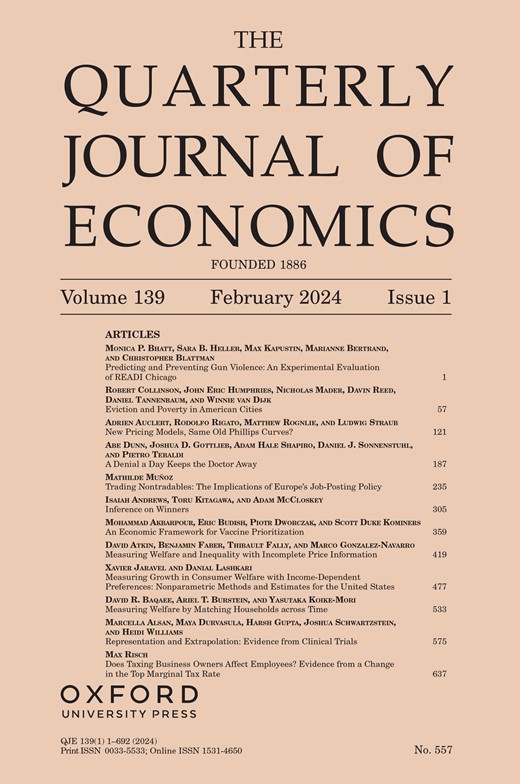Property Rights over Marital Transfers
IF 11.1
1区 经济学
Q1 ECONOMICS
引用次数: 76
Abstract
In developing countries, the extent to which women possess property rights is shaped in large part by transfers received at the time of marriage. Focusing on dowry, we develop a simple model of the marriage market with intra-household bargaining in order to understand the incentives for brides’ parents to allocate the rights over the dowry between their daughter and her groom. In doing so, we clarify and formalize the ‘dual role’ of dowry ‐ as a pre-mortem bequest and as a market clearing price ‐ identified in the literature. We use the model to shed light on the intriguing observation that, in contrast to other rights, women’s rights over the dowry tend to deteriorate with development. We show how marriage payments are utilized even when they are inefficient, and how the marriage market mitigates changes in other dimensions of women’s rights even to the point where women are worse off following a strengthening of such rights. We also generate predictions for when marital transfers will disappear and highlight the importance of female human capital for the welfare of women.婚姻财产转移中的产权问题
在发展中国家,妇女拥有财产权利的程度在很大程度上取决于结婚时收到的转移。以嫁妆为重点,我们建立了一个简单的家庭内部讨价还价的婚姻市场模型,以了解新娘父母在女儿和新郎之间分配嫁妆权利的动机。在这样做的过程中,我们澄清并正式化了嫁妆的“双重角色”——作为死前遗赠和作为市场清算价格——在文献中已经确定。我们用这个模型揭示了一个有趣的现象,即与其他权利相比,妇女对嫁妆的权利往往随着发展而恶化。我们展示了婚姻报酬是如何在效率低下的情况下被利用的,以及婚姻市场是如何减缓妇女权利其他方面的变化的,甚至在这些权利得到加强之后,妇女的处境变得更糟。我们还预测了婚姻转移何时会消失,并强调了女性人力资本对女性福利的重要性。
本文章由计算机程序翻译,如有差异,请以英文原文为准。
求助全文
约1分钟内获得全文
求助全文
来源期刊

Quarterly Journal of Economics
ECONOMICS-
CiteScore
24.20
自引率
2.20%
发文量
42
期刊介绍:
The Quarterly Journal of Economics stands as the oldest professional journal of economics in the English language. Published under the editorial guidance of Harvard University's Department of Economics, it comprehensively covers all aspects of the field. Esteemed by professional and academic economists as well as students worldwide, QJE holds unparalleled value in the economic discourse.
 求助内容:
求助内容: 应助结果提醒方式:
应助结果提醒方式:


